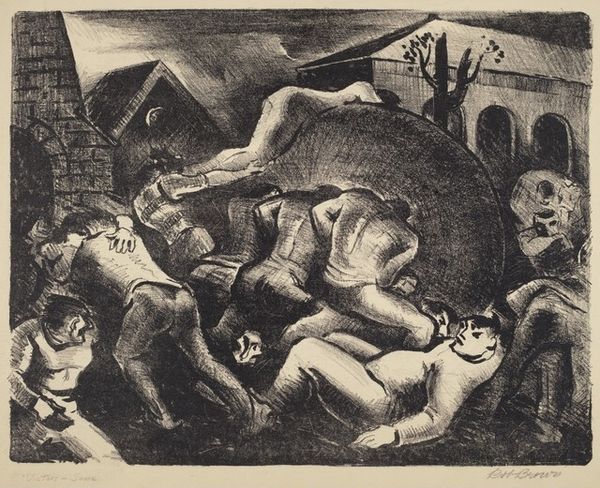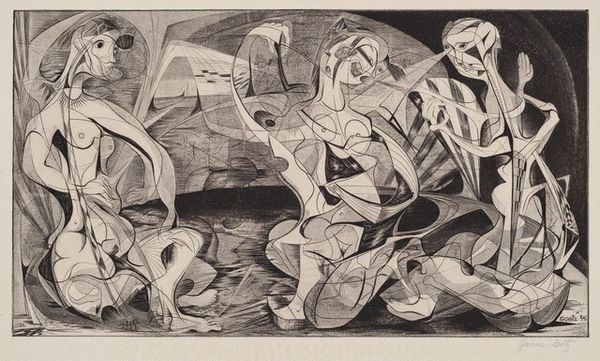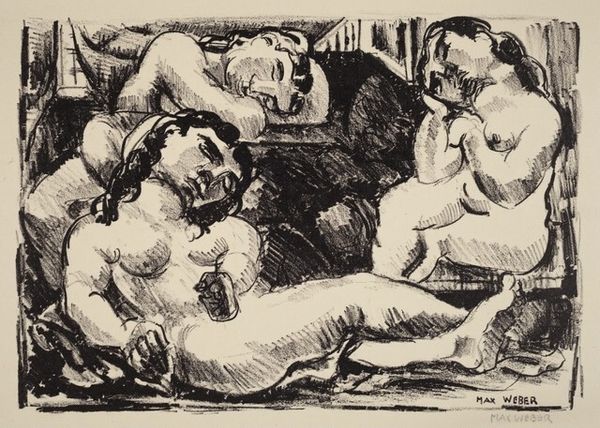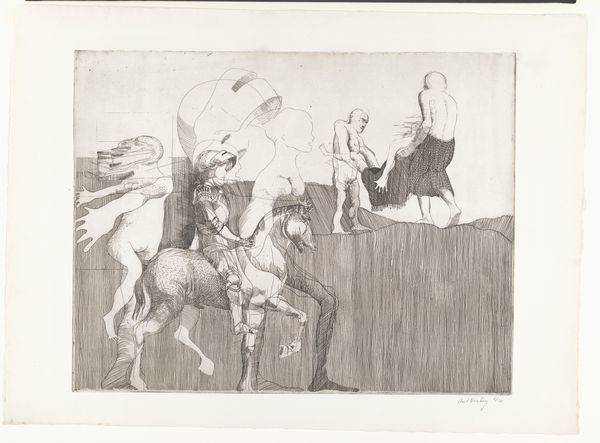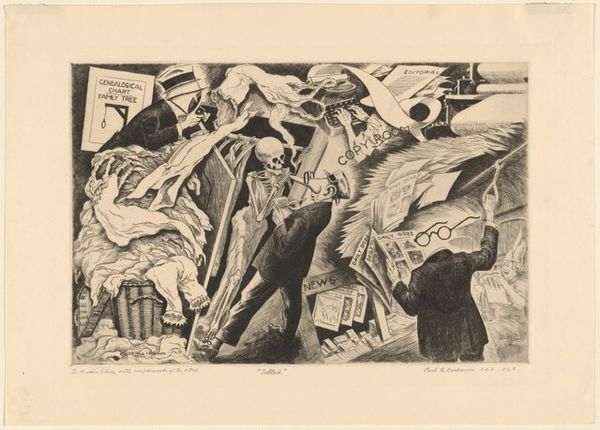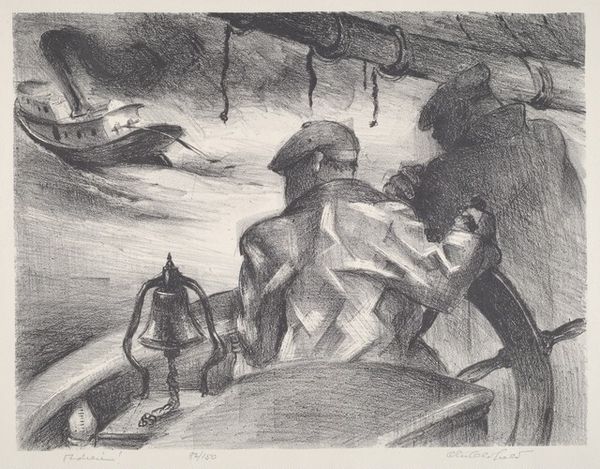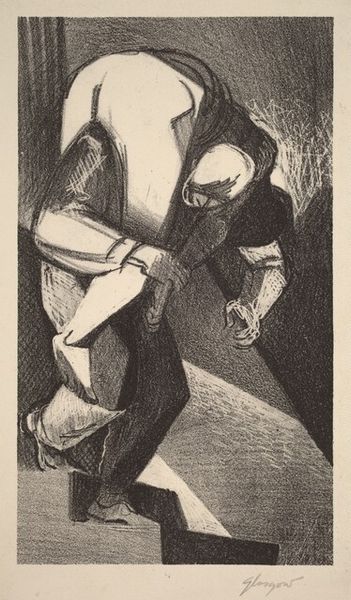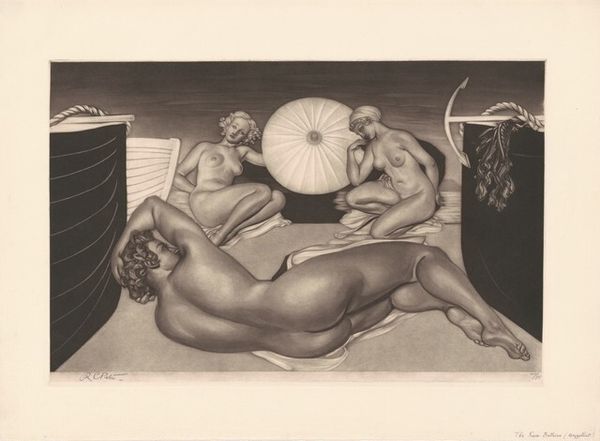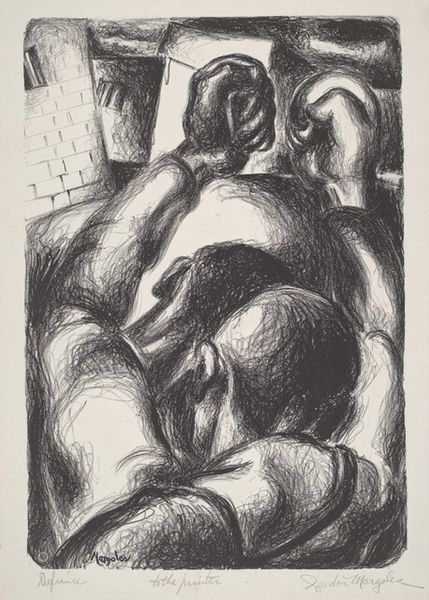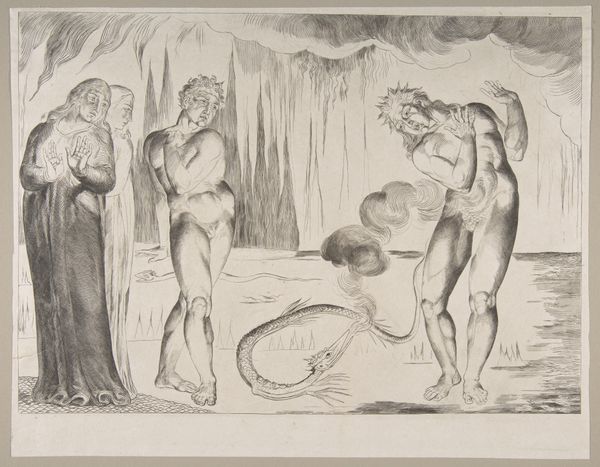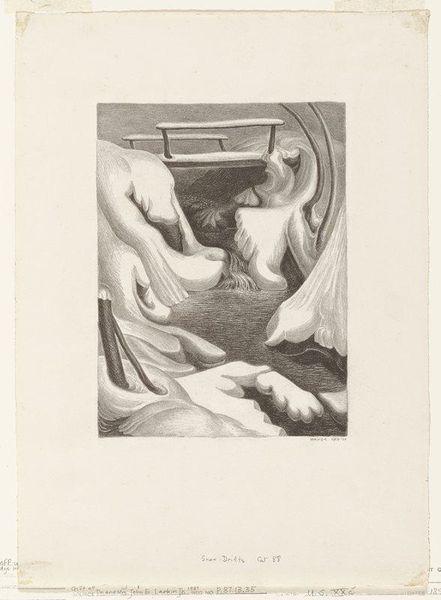
Post-Surreal Configuration: Biological Symphony Possibly 1939 - 1972
0:00
0:00
drawing, print, dry-media, pencil
#
drawing
# print
#
figuration
#
dry-media
#
pencil drawing
#
pencil
#
surrealism
Dimensions: image: 30.8 × 43.82 cm (12 1/8 × 17 1/4 in.) sheet: 38.1 × 51.44 cm (15 × 20 1/4 in.)
Copyright: National Gallery of Art: CC0 1.0
Curator: Oh, this print by Lorser Feitelson. Titled “Post-Surreal Configuration: Biological Symphony.” Probably made sometime between 1939 and 1972, it presents an evocative, if somewhat obscure, composition. What strikes you initially about it? Editor: Claustrophobia. Definitely. All these massive forms, rendered with tight, relentless pencil strokes, feel… oppressive. Look at the laborer, crammed into this dark niche, practically pinned under the weight of the forms. It looks like back-breaking work is happening in this space. Curator: Yes, and the layering creates a strange sense of scale, doesn't it? We have these almost monumental organic shapes dominating the scene. Figures that feel at once vulnerable and imposing. There’s a tension between power and fragility that hums within. Editor: The human figures look as if they’re components in the same visual machine. Even though it looks like drawing, it could be that the matrix here is really about the layering of lithography or some similar print technique; I wonder how that would’ve contributed to its accessibility as artwork… or to the cost of its labor. Curator: Indeed. The drawing does have the quality of multiple states of layering; the soft gradations of light and shadow achieved with a medium as direct as pencil—almost mimicking the effects you would typically associate with printmaking… it's compelling. And while the 'Biological Symphony' might sound optimistic, the actual symphony is more of a lament, a struggle perhaps? The surrealists, especially post-war, were wrestling with some heavy themes. Editor: I see what you mean by that lament. The stark contrast feels harsh. Even the exposed human body comes off less sensual and more vulnerable, almost industrialized. The workers appear under constant precarity… is there freedom to find and follow beautiful compositions of existence, if labor requires such oppression? What do we learn to desire and value if this is the underlying cost of production and consumption? Curator: These are poignant questions. And perhaps that is part of the symphony here— the complicated score of human existence with all its conflicting notes and disharmonies… Feitelson urges us to look beyond the surface and grapple with the complex structures beneath. Editor: It does give a lot to think about – what’s happening and also how. The weight of materiality itself, you know? Thanks for that context. Curator: A true pleasure, always. I see this as an artwork that pushes us to feel deeply the world, its possibilities and limits.
Comments
No comments
Be the first to comment and join the conversation on the ultimate creative platform.

